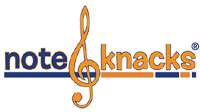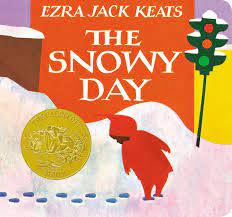Happy New Year!! I hope you are having a wonderful start to 2022 (It has to be better, right??). In light of the season, I thought it would be fun to start the Kindergarteners off with a snow theme. I introduced our theme by moving with scarves to the song “Snow” from the movie White Christmas. I love to have the kids listen to music from different times in our history, as it feeds their “aural imagination” as Nick Demos puts it. It is also such a great song and demonstrates beautiful singing voices.
We then began a short exploration project using the book “The Snowy Day” by Ezra Jack Keats. It is a delightful book that tells the story of a young boy and his adventures in the snow over the course of a day. The illustrations are wonderful and lend themselves to adding a soundtrack. Read below for the details!
The Snowy Day by Ezra Jack Keats
- Read the book
- What is this story about?
- What do you think snow would sound like?
- Look around the classroom. What instruments here sound like snow falling?
- What are the different ways Peter played in the snow? / Is there only one way to do something?
- The story offers ways to explore the snow.
- Look for the footprints and the long lines in the snow. What would they sound like? Would they be short sounds or long ones?
- What other ways did Peter explore in the snow?
- We can offer ways to explore vocal and instrumental sounds in our room
- Build on Silly Sound compositions
- Let’s look at the instruments in our music room. What is the “correct” way to play our rhythm sticks? Drums? Etc.…. What is another way you can play them? (safely)
- Project ~ Get kids into small groups with 3 different instruments
- How many ways can you create sound with them? Go around room for short demo.
- Send kids back into groups and have them compose a 2-3 mm piece highlighting 1-2 ways they can play their instrument (using the same technique as in the Silly Sounds Compositions lesson)
- Suggest they add vocal sounds to their piece, as well.
- Put mm together to create a larger piece.
- Add form: A section = instrumental, B = vocal, A repeats (an example)
- Add dynamics
- Go back to the pages in the book with the footprints and the long lines in the snow.
- Discuss as a class how playing an instrument in a certain way relates to rhythm.
- Example ~ hitting a drum with your hand can be used for short sounds and sliding your hand across it can be used for long sounds.
- Get kids back into small groups and have them choose one instrument to make either short or long sounds.
- How can you write down your choice so that we know what you chose?
- In the book, the footsteps in the snow could be red Note Knacks and the long lines in the snow could be many grays strung together to make very long sounds!
- What Note Knacks will you use to demonstrate your short or long sounds?
- Discuss as a class how playing an instrument in a certain way relates to rhythm.
I have listed these activities in an order, but you could easily make it your own! You may choose to do the short and long sounds first and have them compose a short piece using reds and grays or use this order but compose the larger piece at the end. Your A Section could be made up of long and short sounds, but the B Section is made up of different kinds of “silly sounds”. It is completely up to you and your kids! I love lessons like this for the simple reason that you can change it as needed. You know your kids better than anyone else and you will find the way that works best for you! Let us know what you did in the comments below!


0 Comments